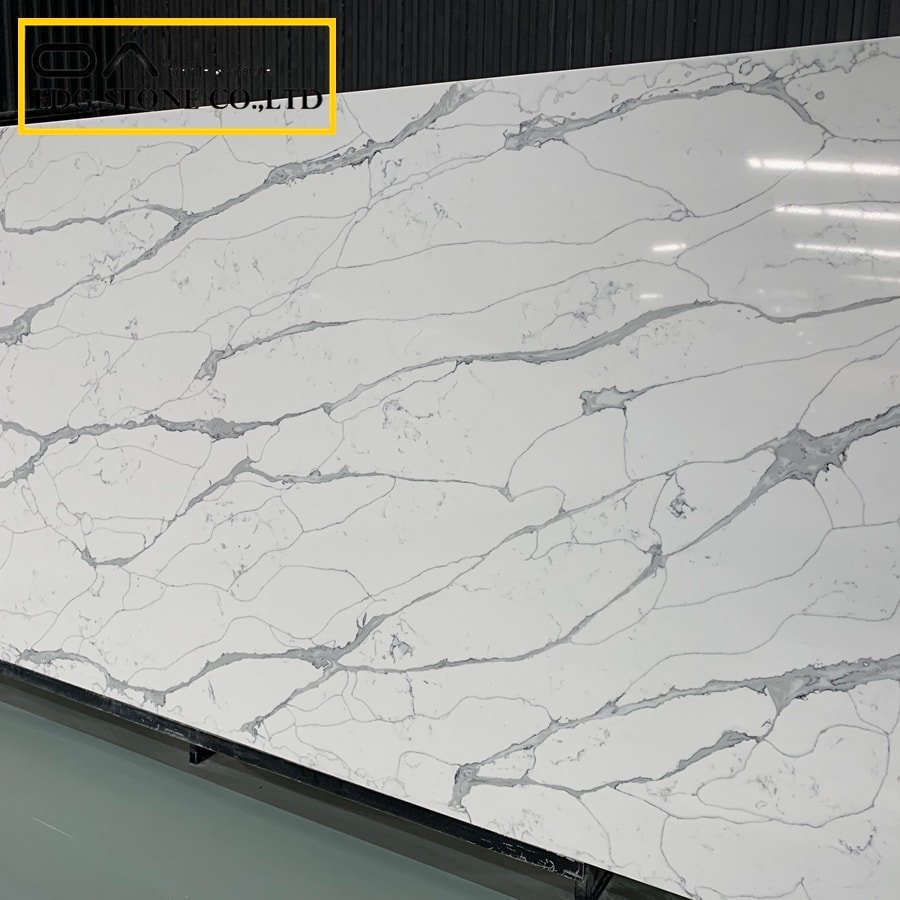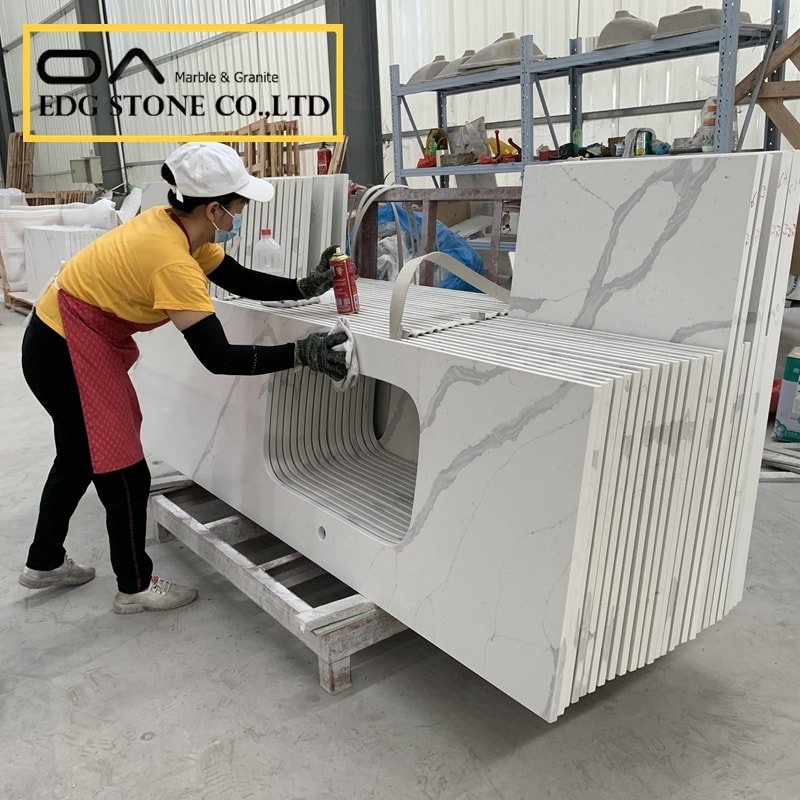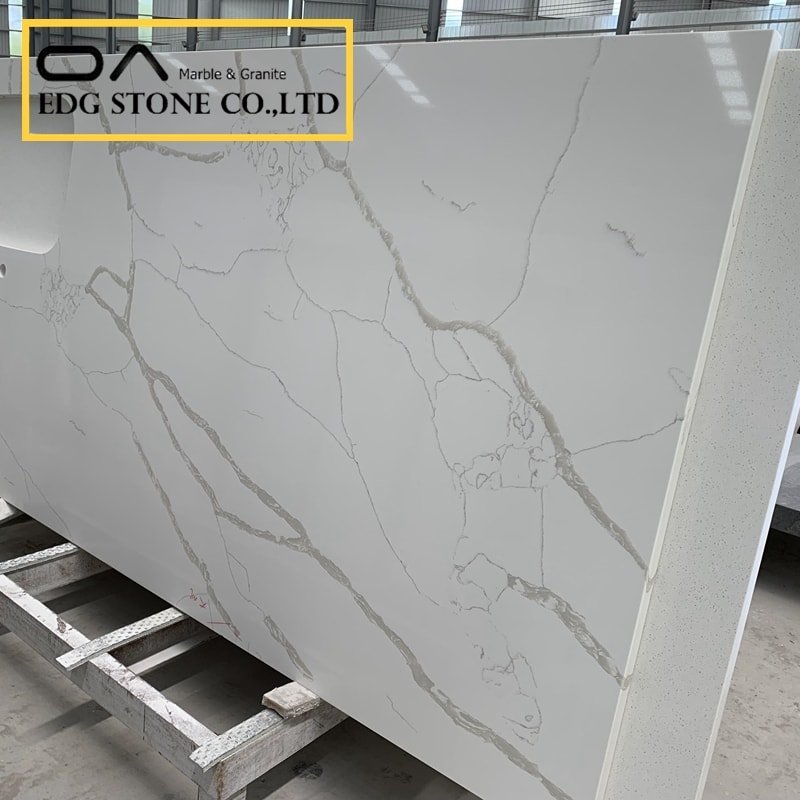The surface of the quartz stone slab is smooth, flat without scratches, and the dense and non-porous material structure allows bacteria nowhere to hide and can be in direct contact with food. It is safe and non-toxic, becoming the biggest advantage of quartz stone countertops. A kitchen is a place with a lot of oily stains. If the items in the kitchen are not cleaned in time, there will be thick stains. Of course, quartz stone countertops are no exception. Although quartz stone is stain resistant, it does not have a self-cleaning function.
Many people have some misunderstandings about how to clean thick stains. Most people choose strong detergent and use wire balls for cleaning. This is the wrong method of operation, but I don’t deny that such cleaning is effective for other items. According to the test report issued by the quartz stone manufacturer, the hardness of the quartz stone plate can reach Mohs hardness level 7 at the highest, which is second only to the hardness of diamond, so that ordinary ironware cannot damage its surface. But using a ball of iron wire to rub back and forth is different, it will damage the surface and cause scratches.
The correct cleaning method for quartz stone is to use neutral detergent or soapy water and use a rag to clean it. After cleaning, rinse with clean water, and then wipe dry with a dry cloth. Although the water absorption rate of quartz stone is almost zero at 0.02%, it is necessary to avoid the possibility of penetration or leaving water stains. The most important thing is the maintenance and cleaning of the splicing seams. Clean them in time after use to avoid the blackening of the splicing seams and the growth of bacteria. The splicing seams should be waxed regularly. If there is no special wax for stone in your home, you can use car wax or floor wax, and you should wax it at least once a month.








